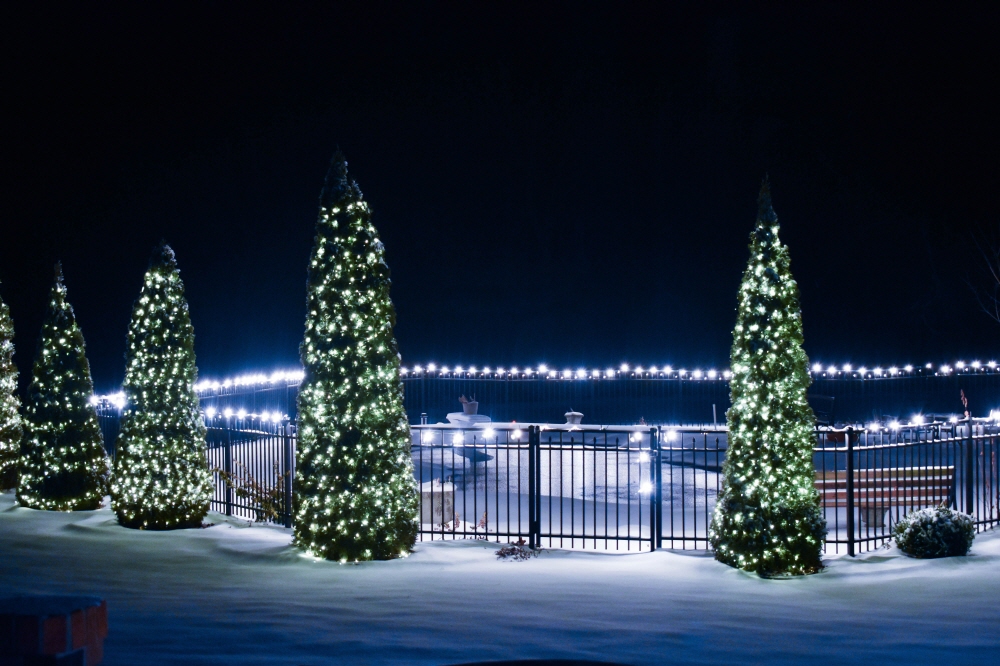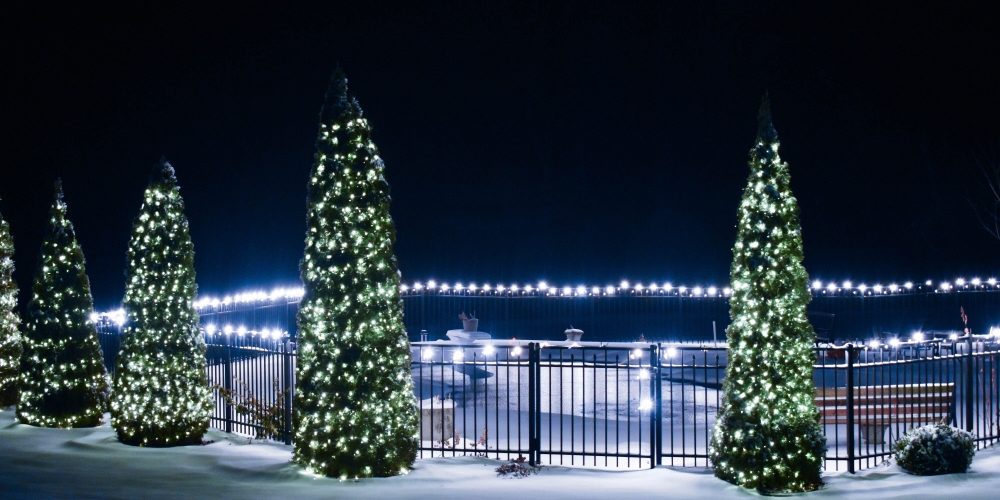
Americans spend 2 billion dollars a year on Christmas trees. Of the natural Christmas trees in the United States, 98% are said to come from tree farms that grow them. According to the US Department of Agriculture, and Christmas tree farms nearly 1,500 in the United States Farm tract stars is 30,000 6,000m 2 in about 8,000m 2.
The US Christmas Tree Farm has always grown 35,000 Christmas trees, and 25 to 30 million of them are said to be released in one season. 75% of the supply comes from relatively large farms of less than 500, and by state, Oregon, North Carolina, Michigan and Pennsylvania account for two-thirds of all US supplies. In particular, in Oregon, with a population of about 4.2 million, 50 million Christmas trees are cultivated, which is 12 times the population.
There are at least 15 varieties of trees grown as Christmas trees, but each has almost the same production cycle. Farmers buy and cultivate seedlings that cost between $0.5 and $1, and after two years, they are replanted and planted in the field for great growth.
In general farm planted a Christmas tree 1,200 per 4,000m 2 dogs and it takes about 8-10 years to grow to a size that can be shipped as a 1.8m wood. Christmas trees can be said to be a special existence among crops because of the special production cycle that takes 8-10 years from growing to shipping.
One expert pointed out that growing a Christmas tree requires a lot of blood, sweat, and tears, and that it takes time as well as effort and money. Farmers also describe growing Christmas trees as an unpredictable game that tests patience. It takes a long time to realize profits and can cause problems. Some varieties are damaged due to the late frost or the trees wither due to no rain.
The peculiarity of the Christmas tree, which takes about 10 pounds from the start of cultivation to shipment, means that the profits of the farmers are largely dependent on the market 10 years from the start of cultivation. Growing too many Christmas trees to meet the market demand may lead to a drop in prices, resulting in a decrease in profits. If the number of cultivation is too small, the unit price of Christmas trees may increase at once.
For example, in the 1990s, farmhouses planted too many Christmas trees, and the market price of Christmas trees fell sharply in the early 2000s, causing many farmhouses to close. Due to the small number of trees planted since 2008, when the impact of the Lehman Shock recession was strong, the price of Christmas trees rose at once after 2016, and the average retail price per unit from 2008 to 2014 was 36-41 dollars, but after 2016, the average retail price was $75. It was traded for about.
When a Christmas tree grows to a shipping size, it is graded according to its size and quality. The sales method is divided into U-Cut and wholesale. U-Cut is a method in which consumers cut and transport Christmas trees on their own farms, and in wholesale, farmers harvest and deliver them to the market. U-Cut, which accounts for one-third of all shipments, is chosen by consumers looking to experience cutting Christmas trees and is popular on small farms. In U-Cut, one Christmas tree is sold for about $60-80, which is the same as the average retail price, and there is no wholesale/retail margin, so the ratio of farm income is high.
On the other hand, it is a system in which a large farm mainly wholesales contracts with home centers or supermarkets and sends a large number of Christmas trees. Holiday Tree Farm, the world’s largest Christmas tree farm located in Oregon, cuts and ships more than 1 million Christmas trees in 30 days during the season. The farm operates seven helicopters from sunrise to sunset, carrying 1,000 trees per hour.
Although it is difficult to produce Christmas trees, the average wholesale price of Christmas trees was about $35 per piece. Considering the cost required for production, the profit margin is about 25-30%, and the profit per unit is only about 8-10 dollars. In addition, in recent years, climate change and aging workers, which affect the growth of Christmas trees, are also threatening the rapid growth of artificial Christmas trees. The number of decorative Christmas trees in various scenes of Americans reaches 96 million per year, of which 81% are artificial Christmas trees and only 19% of natural objects.
In 2019, the number of artificial Christmas trees shipped was 25 million and the number of natural Christmas trees was 26 million, but the artificial Christmas tree could be used for several years, and as a result, the share of the natural Christmas tree was lost.
According to the US Department of Commerce, 85% of artificial Christmas trees are produced in China, and the central city is Yiwu. There are more than 600 factories related to Christmas decorations here, and the employees who manufacture artificial Christmas trees work 12 hours a day in shifts, and the salary is about $600.
It takes about 8-10 years for a real Christmas tree to grow, but an artificial Christmas tree can be produced in just two days, and the margins that wholesale and retail companies can obtain are larger than that of natural Christmas trees. Artificial Christmas tree maker Balsam Hill emphasizes that artificial Christmas trees are more cost-effective than natural and environmentally friendly because they can be used for up to 10 years. Of course, the value of a natural Christmas tree lies not in convenience, but in value that cannot be exchanged for price. Related information can be found here .


















Add comment